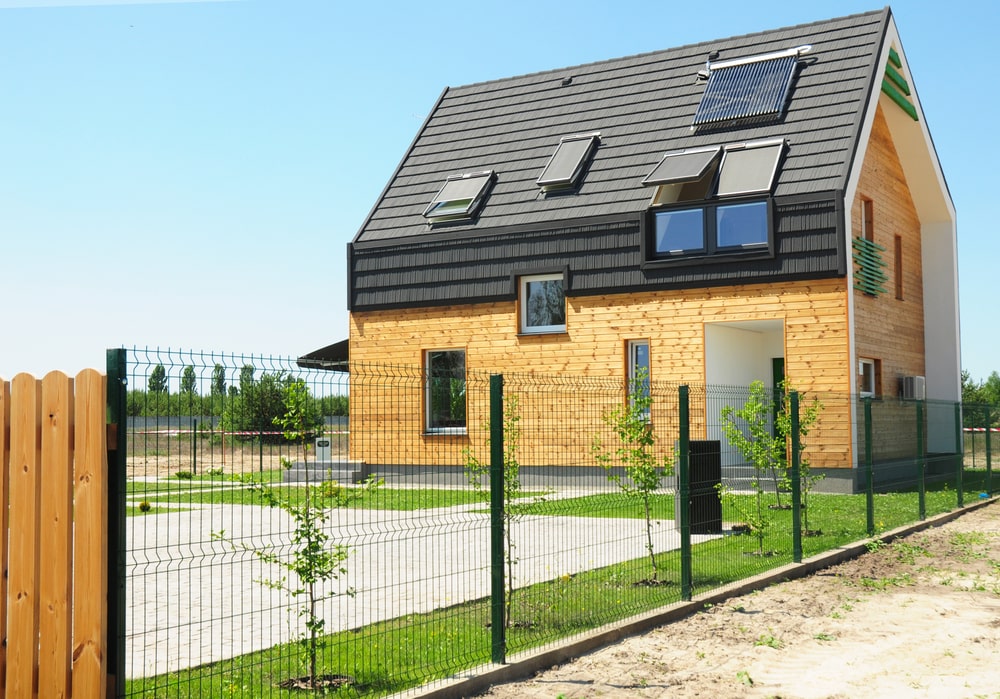News - Construction News
Time to get Passiv aggressive

The UK’s 2050 net zero carbon deadline is laudable, but given the energy crisis there is a pressing case to reduce consumption in the short-term, to lessen the burden on UK residents and businesses now, which by default would help towards the zero carbon aspirations!
Whilst we have Russian leader, Vladimir Putin to blame for the havoc caused in the energy market, our government can take steps to reduce energy consumption by joining the construction sector to get more Passiv-aggressive in 2023.
In this article, Robin Lawson, managing director of building services engineering company, Ameon, argues the case for the standards needed for the new build sector to reduce our energy usage going forward. He also suggests that the government’s heat pump quest might not be appropriate for all existing housing stock, given costs and a zero carbon target that is more about aspiration than practicality.
The Passivhaus model
In the new-build sector, the Passivhaus model is the obvious choice to pursue vigorously, if we really are committed to the creation of homes with comfortable environments and low energy usage. That said, new developments are already designed to be as carbon neutral as possible, but more could be achieved if we were to have a greater focus on Passivhaus building standards, which can reduce energy consumption in residential properties by 90%, due to the exacting design standards, specification of materials and ultra-high level of insulation. Combined, these help Passivhaus developments deliver comfortable living temperature conditions throughout the year.
There are currently fewer than 2,000 UK homes built to Passivhaus standards, although a number of trial projects are currently underway to see what can be achieved. Amongst those is ‘Greenhaus,’ a residential development of 96 apartments in Salford, Greater Manchester, which aims to bring Passivhaus for the first time into the affordable housing market. ‘Greenhaus’ is also ground-breaking in that it introduces air source heat pumps to multiple occupancy high-rise development.
Building to Passivhaus standards does add a premium to development costs, but for enlightened developers, it could well be the ultimate sales proposition, whether the properties are then aimed at the private purchaser/private rental market or social housing provider.
What to do with existing housing stock
If Passivhaus really is the way forward to conserve energy in new build, there’s still the issue of what to do to with existing housing stock. Of course, the early suggestion was that everyone should have a heat pump installed in their property to see energy usage fall. Yet, even though I’m a huge advocate of heat pumps, due to the fact that decades ago, Ameon was one of the earliest adopters of the technology in the UK, I believe the one-size-fits-all suggestion to replace gas boilers in all UK homes, takes little account of the country’s eclectic housing stock.
Our housing is not only representative of the building standards of different decades but also several centuries. As a consequence, there is no such thing as an average house, and so it follows that there can only be customised solutions to heating existing homes economically.
The drive to insulate homes, so that heat pumps can be installed is an example of the one dimensional plan. Sure, you’d have a better insulated property, but for heat pumps to be effective, properties need to be almost airtight (as with Passivhaus examples), which is much more difficult on older properties. And, because of their lower temperature output, heat pumps are more effective when used with underfloor heating, and not with conventional radiators.
We need to ensure homeowners are informed before deciding to replace a boiler with an air source heat pump, as they could see their bills soar if their property and existing heating system are unsuitable.
At a time of economic crisis, with incomes squeezed and energy prices soaring, the heat pump is an answer, but it isn’t the Holy Grail for reducing bills and keeping existing housing stock warm, without substantial remedial work being required to each property.
People need to realise that in order to be truly efficient, a heat pump needs to operate at significantly lower water temperatures (circa 40 Deg. Celsius) than a gas boiler (typically 70 – 80 Deg. Celsius) and therefore plugging one in to a typical central heating system would result in lukewarm radiators, unable to heat the room, or the heat pump water temperature turned up to such an extent that it becomes massively inefficient: with an electricity bill that is through the roof!
As mentioned earlier, UK properties differ in design and materials, reflecting the decades and centuries of differing construction techniques and standards. The first consideration a homeowner should have to reduce energy is to improve the efficiency of the property itself in terms of insulation to walls and roof, new low U value double or triple glazing and a process of draught sealing. These measures will allow a heating system, be it ideally underfloor, or even radiators, to heat the home to a comfortable level, but with much lower water temperature than was available from a gas boiler. The costs of achieving this could differ greatly from property to property, and in some cases make it difficult to deliver cost-effectively for the average income household.
Of course there’s also the argument to use Hydrogen boilers, which throws up its own unique challenges and questions. Too many to make it a simple or cost-effective option for now, so perhaps our focus in 2023 could be on what’s really achievable for the best possible price for existing homeowners, together with a bit more aggression from the market in pursuit of Passivhaus standards.
If you would like to read more stories like this, then please click here
Related Articles
More News
- Reforms to Building Safety Regulator to accelerate housebuilding
15 Jul 25
Delays to building new high-rise homes will be unblocked through a new package of reforms
- New £39Bn Social and Affordable Homes Programme
14 Jul 25
Hundreds of thousands of social and affordable homes, including 60% for social rent.
- UK Introduces New Trade Measures to Support Steel Sector
11 Jul 25
Steel producers across the UK will benefit from stronger trade measures from 1 July.






